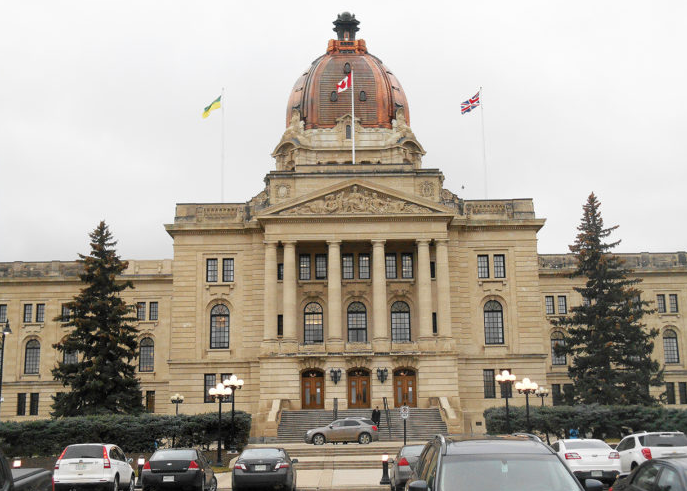The closure of the Key Lake and McArthur River uranium mine sites has darkened Saskatchewan’s economic outlook, but the province’s economy and budget are still outperforming expectations.
The provincial government released its mid-year budget update Thursday. The deficit is projected to be $348.3 million, about $17-million lower than budgeted, but the situation has worsened slightly since the first quarter update.
Revenue is up $138.1 million, due to higher non-renewable resource revenue from oil and potash sales, as well as increased income from Crown corporations, federal transfers and other revenue.
SaskPower is expecting increased income due to sales growth with large customers and with Alberta, while SaskEnergy is benefitting from colder-than-normal weather and the sale of its non-core processing facility.
Those increases are offset by a $50-million decrease in income tax revenue.
Expenses are also up. That figure has increased by about $121 million, mainly from a previously-reported pension expense as well as increases in child and family services, health services and forest fire operations. Public debt is down thanks to higher revenue and lower debt on the balance sheets of SaskPower and SaskEnergy.
According to the province’s documents, “several major investment indicators are down” compared to last year, but manufacturing sales are up 12 per cent and exports up by just under 12 per cent. Crop production, wholesale trade, retails sales and employment are all slightly improved.
Housing starts, though, are down by 28.6 per cent over the first nine months of 2018 compared to last year, and investment in non-residential construction is down by 8.6 per cent. Oil investment is also down, despite higher prices.
Despite some of those decreases, the province is still expected to post a modest growth in real GDP.
“On balance, the effects of weaker investment in 2018 have been offset by positive performance in other areas,” the province wrote.
The GDP growth, though, is lower than anticipated. The real GDP was forecast to go up 2.5 per cent in 2019. That has since been revised down to 1.2 per cent, primarily due to the shutdown of the McArthur River uranium mine. That shutdown also dampens the outlook for non-renewable resource revenue. A higher oil price differential also impacts that revenue. Non-renewable revenue is still forecasted to come in $18.1 million higher than budgeted, but the projection has fallen by $87.7 million since the first quarter.
The government is also projecting lower-than-expected fee revenue from the Saskatchewan Health Authority and a $6.4 million decrease in expected land sales at the Global Transportation Hub.
Provincial Finance Minister Donna Harpauer used the update as an opportunity to call on the federal government to help Canada’s oil industry with additional pipeline capacity. A lack of pipeline capacity leads to lower prices for Canadian crude oil, as more oil is being produced in Alberta than can be transported to market. Alberta oil is also heavier and needs more processing than American product, which adds to the price differential. More pipeline capacity would cut down on some of those shipping costs, decreasing the discount on Canadian oil.
Luckily, in Saskatchewan, oil produced is lighter and trades at higher prices than the Western Canadian Standard measured in Alberta.
Still, the price differential is a concern.
“We’re now in uncharted territory,” she said.
‘We’re seeing the differential that we have not seen for a very long period of time. That’s concerning as we build our next budget.”
She added that the province has shifted away from a reliance on non-renewable resource revenue. That shift means the government can maintain services in the face of a non-renewable resource slowdown, but an impact on five per cent of the budget still has significance.
Overall, Harpauer was confident with the province’s financial situation.
The budget and the plan to return on balance “both remain on track,” she said.
“While we’re on course, we recognize that there is still work to do. We will continue to manage carefully, invest in priorities for Canadian people, shift from our reliance on volatile resource revenue and help keep our economy strong.”
NDP leader Ryan Meili was critical of the increase in spending. He said it’s a sign the government is cutting in the wrong places. He pointed to higher-than-budgeted expenses in justice, health and social services.
“That to me is evidence to what we’ve been saying, that this austerity approach will end up costing more,” he said.
“What we’ve seen in this government is that they’ve cut in health, in education, but those are areas that when you put o=money into them, they help grow your economy. They’ve had big spending on things like the (Regina) bypass, GTH and carbon capture without a big return. They’ve cut corporate tax rates deeply, not a big return. Those things shrunk our economy rather than grow it. What we need to do is look at where we are investing in people, so long-term we are removing that debt by having that growth.”
Meili pointed out that Saskatchewan’s debt has tripled in the last four years. Harpauer said that debt is in infrastructure and Crown corporations. According to the government’s budget update, Saskatchewan has the third-lowest debt-to GDP ratio among Canadian provinces at 14.8 per cent. Only B.C., at 14.7 per cent, and Alberta, at 8.6 per cent, have lower ratios.


